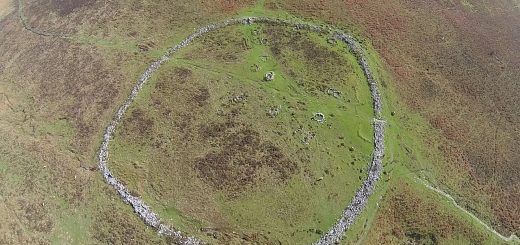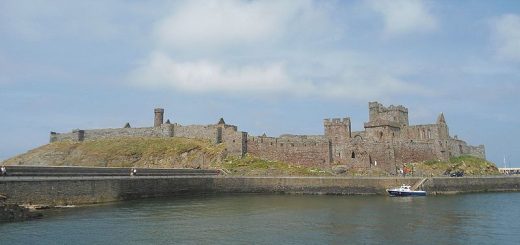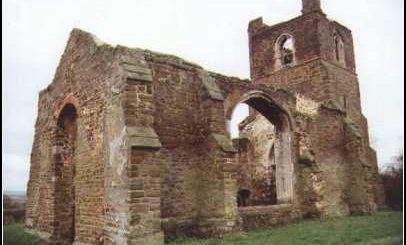Bessie Dunlop, The Witch of Dalry
Bessie Dunlop was known as the witch of Dalry (Ayrshire), she was burned at the stake in 1576 although she was seen as a white witch. Her story is interesting because it outlines some of the folk beliefs at the time. Although her confession was probably extracted through torture it contains none of the usual Devil and evil spirit references, and is similar in some ways to experiences by modern ‘psychics’.
The 16th 17th and 18th Centuries were a dangerous time to be alive if you were a village wise woman, or in many cases somebody who did not fit into society. In Scotland the dictum “Thou Shalt not suffer a witch to live” was taken as seriously as it was in the rest of Europe, and those accused of Witchcraft could expect torture and eventual burning at the stake.
Many of the confessions, drawn out by the cruel tortures, were no doubt the ranting of pain-wracked wretches who confessed to ease their pain. On the other hand there is no doubt that some people acted as wise women or men, making herbal cures and using the gift of the second sight for the good of local people. One such person was Bessie Dunlop known as the ‘Witch o’ Dalry’.
According to testimony she helped local people with herbal cures for animals and children, and offered all sorts of oracular information, including finding stolen and lost property. In her confession (no doubt extracted under torture) she describes how she came to her powers. While she was taking her cow out to a field, she came across an elderly man with a grey beard wearing a grey coat. He wore a black bonnet on his head, and carried a white wand in his hand.
He said that he was the spirit of Thomas Reid, a former Baron Officer to John Blair of Dalry, who had been killed at the battle of Pinkie in 1547. At the time Bessie was stressed with worry, her child, husband and cow were ill, and it seemed that they would not recover. The old man comforted her and predicted that her cow and child would die, but her husband would make a full recovery. He then walked off towards the yard of Moncastle, and disappeared down a hole in a dyke that was much too small to let any mortal man pass by it.
This was to be her first meeting with the man who would act as her familiar. On their next meeting, the strange apparition offered her material goods in the form of horses and cows if she would denounce Christianity. She refused, and said that she would rather be riven with horse’s tails (a form of whip) He was angered by her reply and promptly disappeared.
On his next meeting he introduced her to the fairy realm. Swearing secrecy and telling her that she could not speak in their presence, he introduced her to four men and eight women of Elfame, another name for the fairy realm. They were dressed as humans but very smartly, the men like gentlemen, and the women had ‘all plaids about them’. They were very friendly towards Bessie, and asked her to travel with them to Elfame. She did not return their questions, and eventually they departed with a “hideous ugly blast of wind” leaving Bessie lying sick on the ground.
Thomas had also left with them, and on his return he told her of the nature of the fairies, and again begged her to change her mind and come with them. She resolutely refused, saying that she did not want to go without knowing of the consequences. He told her that in Elfame she would be well fed and fair of mind and body, pointing to his own well-fed and well-clad condition, but she still would not be persuaded.
It was from her strange mentor that she got all of her knowledge about how to cure cattle and children. People were now coming to her for advice on a regular basis and her reputation was beginning to spread. She consulted Thomas, and he gave her the potions and means to carry out her cures, and told her the location of missing items.
She was even consulted by some of the gentry of the day including Lady Johnstone, Lady Thirdpart in the Barony of Renfrew, and the daughter of William Blair of Strand, who was to be married to the Laird Crawford of Baidland. Thomas speaking through Bessie suggested that if she were to marry him she would come to an untimely demise by her own hand.
From her confessions it seems as though Thomas walked amongst mortal men on a few occasions. She saw him walking the street in Edinburgh, and once at Dalry churchyard, passing amidst a group of men. She also saw the fairy folk sporadically, although she did not interact with them: One day walking at the side of a loch, a huge company of riders came by making a tremendous din. They proceeded to ride straight into the loch and disappeared. She recognised one amongst them as the Laird of Auchinskeith who had passed away nine years before. The riders were fairies on their way back to Elfame. She is also purported to have met the queen of the fairies who was the mistress of Thomas.
Thomas had predicted that she would be called to account for her dealings with the spirit world, but that the assizes of her neighbours would save her from evil. Unfortunately for her, on November 8th 1576 she was arraigned at the bar of the High Court of Judiciary, accused of sorcery, witchcraft and incantation, dealing with charms, and abusing the people with devilish craft of sorcery. She was found guilty and sentenced to be burned at the stake.
It seems that she can really be seen as a white witch or wise woman, who used her abilities for the good of the community. Her reputation suggests that at least some of her cures and advice worked. She was never accused of doing any harm to any of her neighbours, but she fell victim to a time when witchcraft hysteria was just about to take a firmer hold. Her confession, when compared with the more outlandish claims of other torture extracted disclosures, is not unlike more modern tales of spirit contact. It also fulfils a few folklore motifs, for example the belief that some humans passed into the fairy realm, and became mediators between the two worlds was once widespread.




Recent Comments